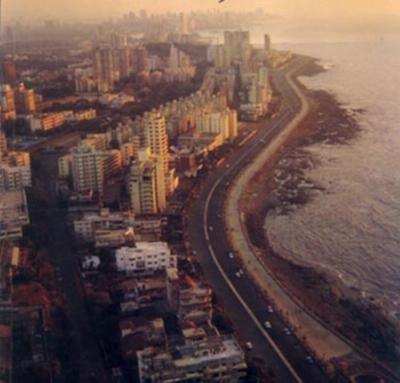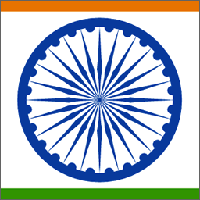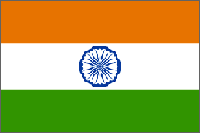|
History of Bombay
The city is said to derive its name from Mumbai Devi, a Hindu goddess, although some claim that Bombay is a corruption of the Portuguese bom baia, meaning harbor.Prior
to the establishment of a Portuguese trading post in 1534, the islands were inhabited only by fishermen living in scattered hamlets. The Portuguese did not value the site as much as Goa, about 200 miles (320 kilometers) to the
south, and they ceded Bombay to England in 1661 as part of the dowry transferred at the marriage of Catherine of Braganza to the English king Charles II. A large fort, called the Castle, was completed in 1717. The first dock
facilities were opened by 1750. Growth wassteady, as befitted a city housing the headquarters of the British East India Company (1672-1858). The greatest periodof growth, however, occurred in the 1860s. The American Civil War
cut off the supply of Southern cotton to British textile mills, and the mill owners turned to western India for their raw material. Somewhat earlier, in 1851, the Indian cotton textile industry itself had been born in Bombay.
The opening of the Suez Canal in 1869 made Bombay even more important as a trading center. The building of railways in the 1860s and 1870s gave Bombay direct connections to all the other major points throughout the country.
Bombay has seen a number of catastrophes. The most notable were the Great Fire of 1803, which destroyed almost three quarters of the city; the devastating
epidemic of bubonic plague in 1896; and the harbor explosion of April 14,1944, when a munitions ship blew up and leveled 300 acres (120 hectares) of docks and warehouses.

Climate
Bombay lies midway along the west coast of India on the Arabian Sea, just south of the Tropic of Cancer. Its
location ensures warm temperatures the year around, ranging from 75 F (24 C) to 86 F (30 C). Humidity and rainfall provide the major variations in the climate. From early November to early March, humidity is low, skies
are blue, and the weather is comfortable. From March to early June, however, very high humidity combines with somewhat higher temperatures to produce the most uncomfortable weather of the year. The southwest monsoon,
from June to September, brings slightly cooler temperatures but also torrents of rain.
Bombay possesses one of the finest harbors in the world. This and its location facing Africa, the Middle East,
and Europe have made it a major port city that normally handles more than one third of India's foreign trade. These trading activities together with such diverse industries as oil refining, chemicals and pharmaceuticals,
engineering and machinery, and cotton textil es have attracted a wide variety of peoples to the city es have attracted a wide variety of peoples to the city
People and Culture
.Greater Bombay, which includes the city proper and its nearby communities, has a population of more than 12 million
squeezed into an area of only 239 square miles (619 square kilometers). Originally, Bombay's site consisted of seven small basaltic lava islands. These islands are now connected by
reclaimed land to one another and to the much larger Salsette Island to the north, but each still represents a distinctive neighborhood or section of the city. The city, which is steadily
growing by in-migration, is increasingly crowded on its narrow, peninsulalike site. The principal business district and residential sections are concentrated on the southern part of
Bombay Island. That the area was settled in ancient times is attested to by the 2nd- to 9th-century carvings of Kanheri Caves on Salsette Island and the 7th century temples on nearby
Elephanta Island. The area was incorporated in the kingdom of Gujarat in 1348. In 1534 it was acquired by the Portuguese,
who named the harbor Bom Bahia ("beautiful bay"), from which the name of the city is derived. The site was ceded to the English in 1661; in 1668 it was leased to the British
East India Company, which made its headquarters here in 1672. Land-reclamation projects were undertaken in
the 18th and 19th centuries. Industrial development began in the 1850s with the construction of the first railroad and the establishment of the first cotton-spinning mill. The cotton textile industry boomed during the American
Civil War (1861-1865) when United States cotton shipments to Great Britain were interrupted; the opening of the Suez Canal in 1869 added greatly to the port's prominence. The city was formerly capital of Bombay Presidency
and Bombay State and in 1960 became the capital of the newly-created Maharashtra State. Population (1991, greater city) 12,596,243.
Bombay has a cosmopolitan population with representatives of virtually every linguistic and religious group of
India, aswell as a significant foreign population. Marathi, the dominant language, is spoken by more than one third of the population. Other important languages are Gujarati, Urdu, and Hindi. English is the language for
business, trade, manufacturing, education, and politics.Over two thirds of the people are Hindus. There are important min
|



